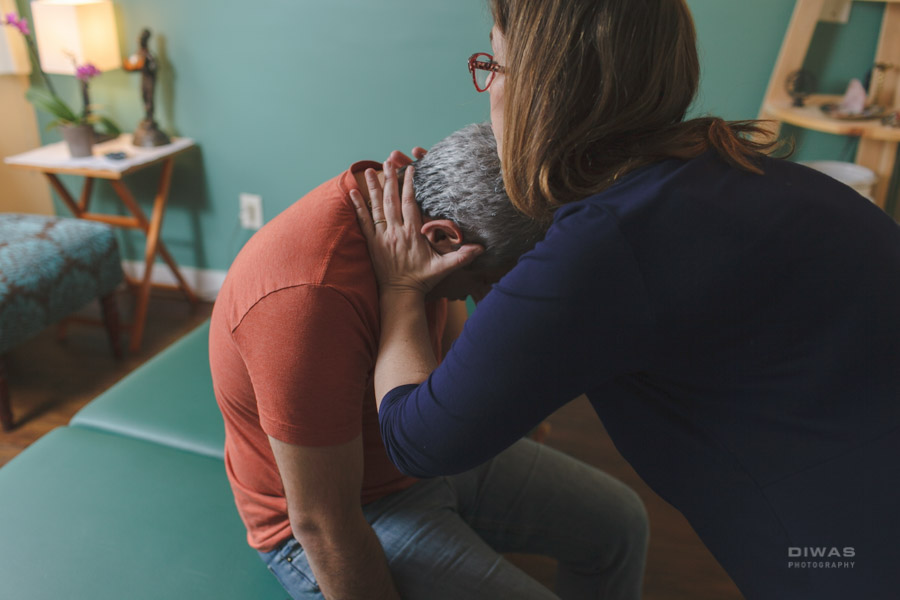
Are you looking for greater improvements after injury, surgery, or stroke?
Do aches and pains keep you from doing the things you love to do?
Do you have scoliosis, TMJ, shoulder, neck or back pain?
Are you interested in a natural, holistic pain relief method?
Would you like to move with more ease and vitality?
Moving with more ease is a learnable skill
Often the pain we suffer from is a result of habitual, faulty movement patterns formed in the brain. Have you ever found relief from massage, chiropractic, or physical therapy only to have the pain return not long afterwards, in the exact same place? It could be because you did not learn how to fundamentally change your movement habits.
Traditional solutions frequently involve treatments that target the discreet location of pain, or isolated muscle groups—but not the overall organizational movement habits that create or maintain the pain in the first place. And those habits are formed in the brain—which means, under the right conditions, those patterns of organization can change.
When we target upgrading the source of our movements—the brain—we can harness it's ability for reorganization and transformation. We can learn how to move with more ease, grace, skill, agility, power and intelligence while eliminating aches and pains.
Recruit your brain's ability to change
Anat Baniel Method® of NeuroMovement® lessons use an innovative sequence of guided movements, directed attention and applied principles of neuroplasticity—called The Nine Essentials—to increase differentiation and mapping in the brain, helping students of all ages and abilities form new, more skillful, well-organized, pain-free patterns of movement.
By accessing the amazing powers of the brain to change itself, this method helps people discover how to improve their mind and body as an integrated system—dramatically enhancing physical, cognitive, emotional, and creative performance. Whether you are in relatively good health with just a few nagging aches and pains or you have a limiting diagnosis, this method can give you the tools to make the impossible possible—so you can live life more fully, with greater ease, joy and success.
Two ways to experience the method
1 •Hands-on | One-On-one IntensiveS
Like learning any new language, immersion is more effective than a single lesson once a week. For that reason, I work in an immersive series of lessons called an intensive.
An intensive is 10 lessons scheduled within a 5-12 day time period: either 10 lessons concentrated within 5 consecutive days (2 lessons a day, with at least two hours in between lessons for resting and eating) or a single lesson a day for 5 consecutive days the first week, then two days off, then the following week a single lesson a day for 5 consecutive days. The lessons build upon one another and the immersion is what helps the newly learned patterns take hold and be adopted.
During a hands-on one-on-one ABMN lesson I guide my student through a series of movement variations tailored to their needs and abilities. Using gentle touch and verbal cues to amplify their awareness, I direct their attention to perceiving subtle differences of effort, sensation and feeling as they move. This process wakes up the brain to new, more efficient and effortless movement possibilities and creates a rich environment for physical, cognitive and emotional transformation. Hands-on, one-on-one ABM NeuroMovement lessons are also known as Functional Synthesis (FS).
2•Verbally Guided | Group & One-on-One
Verbally guided lessons lead the student(s) through a unique sequence of slow, gentle movement variations for particular functions (ie: twisting, rolling, reaching, breathing and many more). There are hundreds of lessons. Like the one-on-one lessons, the emphasis is on movement with attention and on perceiving subtle differences of effort, sensation, and feeling as the lesson progresses. Group lessons compliment one-on-one lessons, and I encourage students to experience both. Verbally guided ABM NeuroMovement lessons are also known as Transformational Movement Lessons (TML)—because of the remarkable changes people experience afterwards.
Who can benefit?
ABMN is not age, ability, profession or diagnosis-specific. Even if I work with two students who are the exact same age and have the exact same complaint, diagnosis or injury—or, even the same movement goals—the way each individual moves and organizes themselves for action is totally unique—because each individual's life experience of movement, development, and response to their injury or diagnosis is so unique.
Each one-on-one lesson is truly tailored to the individual as they are organized in that moment—so it is not one-size-fits-all. That said, ABMN lessons can help people who have the following conditions:
Anxiety
Parkinsons
Multiple sclerosis
Athletic injuries
Repetitive stress injuries
Stroke
Cerebral palsy
Brain damage
Brachial plexus injury
Back, neck and joint pain
Balance & coordination issues
Scoliosis
TMJ
Post-surgery or injury limitations
Neuromuscular disorders
Stiffness and spasticity
Hypermobility
Symptoms of aging
“Anat Baniel applies the exact same principles when helping people overcome limitation that I used to recover my brain and body from stroke. She understands that for any meaningful change to happen in the way we think, move, and use our body, the change has to happen in the brain.”
“After struggling with neck and shoulder pain for several weeks, I went to see Paige. Her thoughtful guidance and gentle movements relieved more stress and tension from my body than massage or acupuncture. The whole process felt very collaborative.
Paige helped me become more aware of the areas where I hold stress unneccesarily. She was able to help me have an awareness of my whole body and how I carry myself in terms I could understand and relate to. She provided me with practical movements I could use at home to help for a healthier posture and less tension. ”




